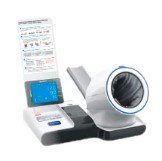Ensuring Safety and Quality of Medical Devices from Politically Unstable Regions: Regulations, Protocols, and Collaboration
Summary
- Regulatory oversight and Quality Control measures are in place to ensure the safety of medical devices sourced from politically unstable regions in the United States.
- Medical labs and phlebotomy facilities follow strict protocols and guidelines to ensure the quality and reliability of the devices used in their operations.
- Collaboration between regulatory agencies, manufacturers, and Healthcare Providers plays a crucial role in upholding the safety and Quality Standards of medical devices sourced from politically unstable regions.
The Importance of Safety and Quality in Medical Devices
Medical devices play a vital role in modern healthcare, aiding in diagnosis, treatment, and monitoring of various medical conditions. From diagnostic equipment to surgical instruments, these devices are essential tools that Healthcare Providers rely on to deliver quality care to patients.
Regulatory Oversight and Quality Control Measures
When it comes to sourcing medical devices from politically unstable regions, ensuring the safety and quality of these products becomes even more critical. Regulatory agencies such as the Food and Drug Administration (FDA) have stringent guidelines in place to regulate the importation and distribution of medical devices in the United States.
- Manufacturers of medical devices are required to adhere to Good Manufacturing Practices (GMP) to ensure the quality, safety, and efficacy of their products.
- The FDA conducts inspections and audits of medical device manufacturing facilities to verify compliance with regulatory standards and requirements.
- Medical devices sourced from politically unstable regions are subject to additional scrutiny to identify any potential risks or issues that could compromise patient safety.
Protocols in Medical Labs and Phlebotomy Facilities
Medical labs and phlebotomy facilities play a crucial role in the healthcare system, conducting various tests and procedures to aid in the diagnosis and treatment of patients. These facilities must ensure that the devices they use meet the necessary safety and Quality Standards.
- Medical labs follow standardized protocols for the handling, storage, and maintenance of medical devices to prevent contamination or malfunction.
- Phlebotomists are trained to use sterile equipment and follow proper procedures to minimize the risk of infections and ensure accurate Test Results.
- Regular calibration and maintenance of medical devices are conducted to ensure their accuracy and reliability in diagnostic testing.
Collaboration and Communication
Collaboration between regulatory agencies, manufacturers, and Healthcare Providers is essential to uphold the safety and Quality Standards of medical devices sourced from politically unstable regions. Open communication and transparency are key to addressing any potential issues or concerns that may arise.
- Manufacturers are encouraged to report any adverse events or product defects to regulatory agencies promptly to initiate investigation and corrective actions.
- Regulatory agencies work closely with Healthcare Providers to provide guidance and support in the safe use of medical devices and to address any concerns related to product safety or quality.
- Ongoing monitoring and evaluation of medical devices are conducted to assess their performance and identify any emerging risks or trends that may impact patient safety.
In conclusion, the safety and quality of medical devices sourced from politically unstable regions are paramount in ensuring patient safety and the delivery of quality healthcare. By adhering to regulatory standards, following established protocols, and fostering collaboration among stakeholders, the healthcare industry can mitigate risks and uphold the highest standards of safety and quality in medical device usage.

Disclaimer: The content provided on this blog is for informational purposes only, reflecting the personal opinions and insights of the author(s) on the topics. The information provided should not be used for diagnosing or treating a health problem or disease, and those seeking personal medical advice should consult with a licensed physician. Always seek the advice of your doctor or other qualified health provider regarding a medical condition. Never disregard professional medical advice or delay in seeking it because of something you have read on this website. If you think you may have a medical emergency, call 911 or go to the nearest emergency room immediately. No physician-patient relationship is created by this web site or its use. No contributors to this web site make any representations, express or implied, with respect to the information provided herein or to its use. While we strive to share accurate and up-to-date information, we cannot guarantee the completeness, reliability, or accuracy of the content. The blog may also include links to external websites and resources for the convenience of our readers. Please note that linking to other sites does not imply endorsement of their content, practices, or services by us. Readers should use their discretion and judgment while exploring any external links and resources mentioned on this blog.
